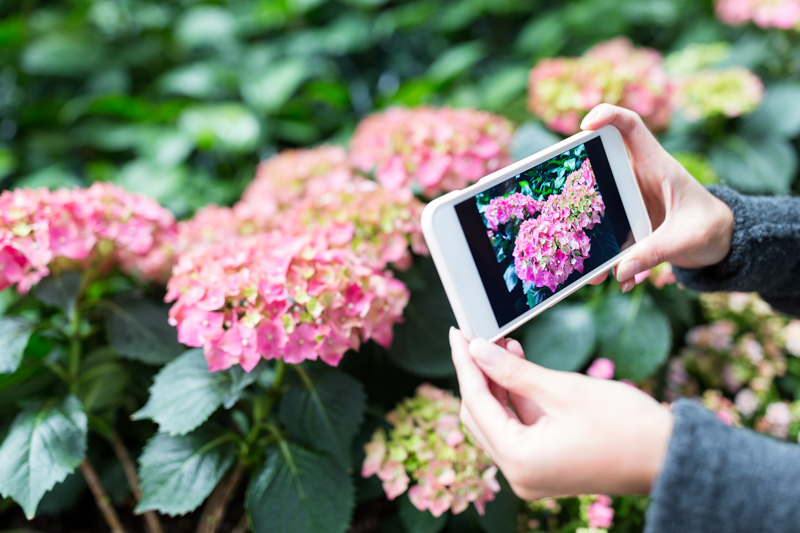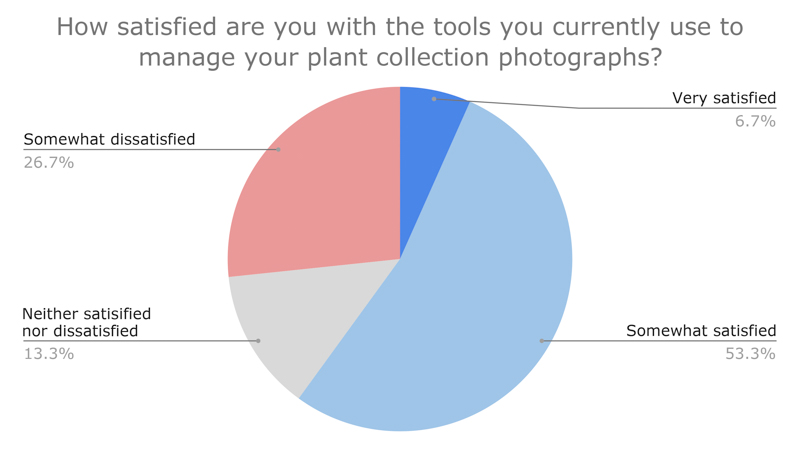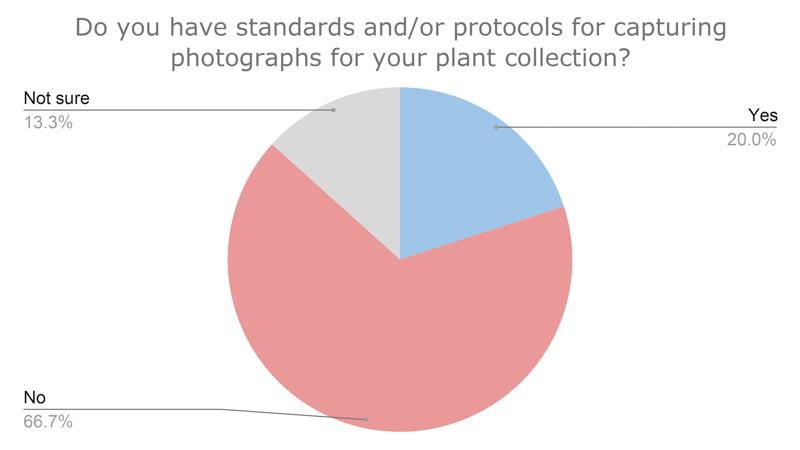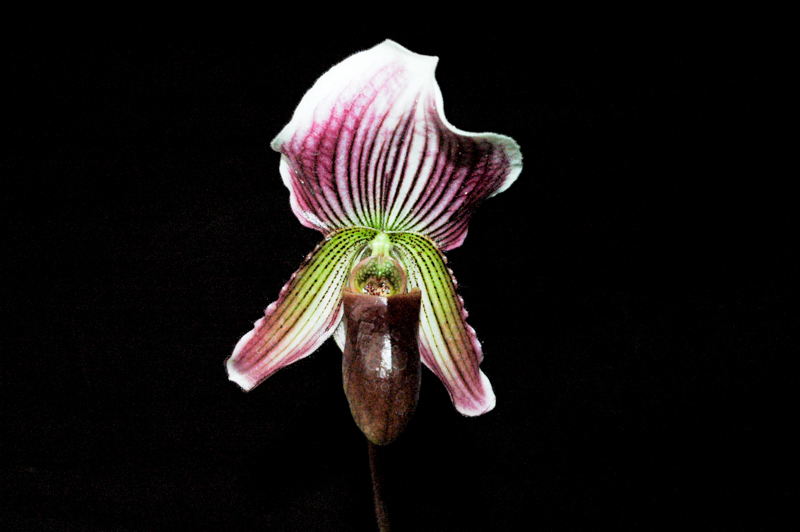Our last webinar on “Image Management in Botanic Gardens” brought delegates together to talk about an important aspect of their collections: photographs.
In many regions of the world, more than 75% of the population has a smartphone. Consequently, with the technological advancements in smartphone photography, most people have a very good camera within easy reach. Is it thought that since 2010, digital camera sales have dropped by 87% and smartphone sales have increased by 600% in the same period.

This new generation of photography (and photographers!) has shifted the way in which we capture and manage our digital content, with estimates for 2022 suggesting there will be almost 10 trillion photographs being stored globally.
From a botanic garden’s perspective, standardised digital images form an important part of the plant collection. Not only do they provide an effective tool for curation, interpretation and display, but also for publicity and marketing purposes.
Despite the plethora of tools available, our webinar poll suggested that gardens today are still somewhat dissatisfied with the extent of image documentation for their plant collection:



Some gardens have developed their own photography processing workflow or policy guidelines. The New York Botanical Garden, for example, has suggestions for photographing herbarium vouchers. More than half of their herbarium, the largest in the Western Hemisphere, has now been digitised.
These workflows can help standardise the quality of photographs, particularly when a number of staff or volunteers are involved. Other institutions may adopt a more detailed approach, with specific requirements based on the taxonomic group being photographed.

Digital Asset Management
Our webinar also explored the benefits of Digital Asset Management (DAM) systems. These tools can be powerful when storing and organising digital content, such as photographs. They can also allow meta-tagging (attributing information to your files), which can help searchability for more advanced needs. Examples of DAMs can be found here.

Coupled with this is the important topic of image rights management, particularly if gardens are working with volunteers to help photo-document their collection. Do you have the rights to the images you use? Do you know how to protect your image rights?
For example, Creative Commons tools are widely-used in this context. These free, easy-to-use copyright licences are a simple and standardised way to give your permission to share and use your work.

Our breakout sessions concluded there are a number of opportunities for getting the most from images and improving the workflows around them: e.g. automating image uploads, meta-tagging for specific projects, and linking multiple file storage systems together with the accessions database.
It is without doubt that historic images and contemporary photographs both hold vital information and purpose. With more seamless image capture and management workflows, there is certainly a lot of potential to increase the usefulness of photographs in plant collections. Luckily there are new technology and software development techniques that can help us make this process easier.
In case you missed it, the recording from the “Image Management in Botanic Gardens” webinar is available on this link: https://www.youtube.com/watch?v=ceujT4WkfxM
Rethinking Plant Records: Part 2 (Q&A) – 29th June (1600–1730 BST | 1700–1830 CEST | 1100–1330 EDT)
Last week, we were delighted to launch Hortis, our new plant collection platform, at the virtual American Public Gardens Association conference. The interactive event, titled “Rethinking Plant Records”, was fully signed up with 60 delegates across the United States and Canada.

As the event was fully subscribed, many were not able to join. We would therefore like to continue these stimulating conversations with a follow-up Q&A session, where we will bring together the themes from our launch workshop.
If you would like to take part or be notified of the event, subscribe to our blog on the link here: https://botanicalsoftware.com/subscribe/
Webinar on 12th August – Plant Collection Value Scoring: More than just a number?
We would also like to take the opportunity to remind you of our next webinar on 12th August. We will focus on collection value scoring, and how these types of measures can be used to gain information about your collection today. We hope you are able to join us on this topic.
Plant Collection Value Scoring: More than just a number?
For more details on how to sign up, visit:
https://botanicalsoftware.com/events/event/plant-records-webinar/
As usual, this and other webinars from our series are available to view on the Botanical Software Youtube Channel:
https://www.youtube.com/playlist?list=PLLnQzj7t8ldqh8CsGrYuDXSJxdCoDdxYf
Further Reading:
- List of countries by smartphone penetration, Wikipedia
- Number of smartphones sold to end users worldwide from 2007 to 2021, Statista
- How many photos will be taken in 2021? Mylio
- Herbarium Specimen Imaging: Standards and Suggestions, The New York Botanical Garden
- Open Access Media, Smithsonian Institute
- Digital Plant Images as Specimens: Toward Standards for Photographing Living Plants
- Comparison of Digital Asset Management Software, G2
- Creative Commons Licences
